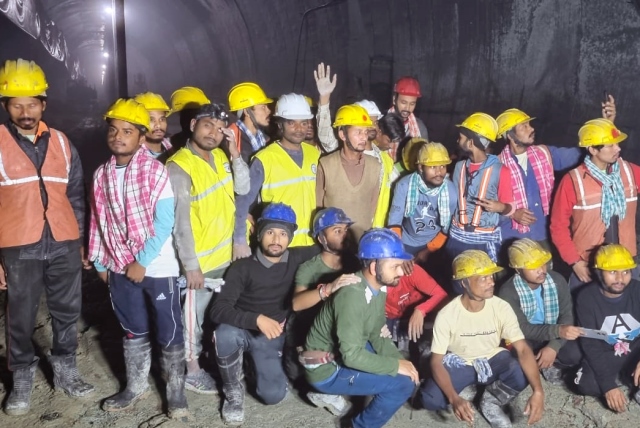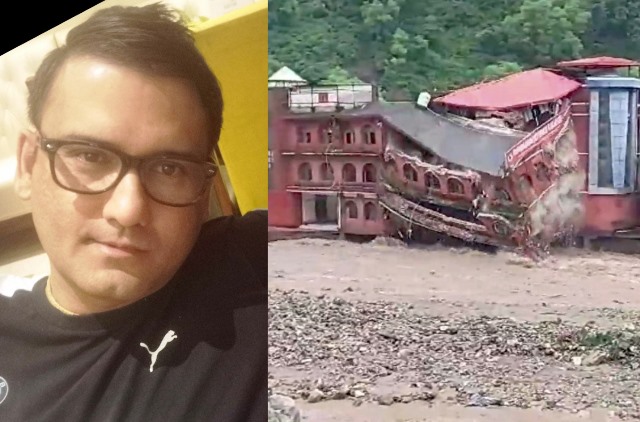Dr Ashok Kumar Raghav, a former IPS Officer with a PhD on Himalayan ecology, rues the mindless construction taking place in northern hills. His views:
India’s mountainous regions, particularly the Himalayas, are facing unprecedented challenges due to climate change. The combination of rising temperatures, climate-induced heat waves, floods, and forest fires, altered precipitation patterns, have increased the frequency of extreme weather events. Human activities such as road widening and construction, have exacerbated the vulnerability of these regions to landslides and other natural disasters. These extreme weather events pose significant risks to public health, agriculture, infrastructure, and biodiversity.
The primary driver of increased landslides and other environmental issues in mountainous regions is climate change. The Intergovernmental Panel on Climate Change (IPCC) has reported that the Himalayas are warming at an accelerated rate compared to the global average.
This warming leads to the melting of glaciers and permafrost, destabilising slopes and increasing the likelihood of landslides. Moreover, altered precipitation patterns result in intense rainfall events, further triggering landslides.
Human activities such as deforestation for agriculture, logging, and urbanization reduce the stability of slopes. Trees and vegetation play a crucial role in holding soil together and absorbing excess water. The removal of this natural cover increases the risk of landslides and soil erosion.
ALSO READ: ‘Char Dham Project Is A Disaster For Uttarakhand Hills’
However, despite all this, the government continues unabated in the construction of roads, tunnels, and other infrastructure in mountainous regions. All such construction activity often involves extensive blasting and excavation, which disrupts slopes stability. Inadequate land management practices, such as improper agricultural techniques and overgrazing, contribute to soil degradation and increase vulnerability to landslides.
The lack of proper drainage systems also leads to water-logging and increased pressure on slopes during heavy rainfall. There is, therefore, a need to implement watershed management practices in rural areas to control runoff and soil erosion.
The government needs to put into place certain remedies that shall reduce vulnerability. They must improve weather forecasting capabilities to provide timely warnings about impending heat waves and disaster preparedness can significantly reduce the loss of life and property during landslides and other natural disasters. This includes installing weather monitoring stations, landslide sensors, and developing community-based disaster management plans.
The use of satellite imagery, drones, and ground-based sensors for early detection of forest fires is very effective. They need to enforce strict zoning laws to prevent construction in flood-prone areas. Restoration and protection of wetlands and natural floodplains is essential, which act as buffers by absorbing excess rainfall.
They can enhance flood forecasting systems and establish real-time monitoring networks. It is also very important to construct and maintain dams, reservoirs, and embankments to control water flow during heavy rains.
To actually put all this into action, there needs to be proper coordination among different government agencies (e.g., meteorological departments, disaster management authorities, forest departments) for a cohesive response to climate risks.
The Indian government plays a pivotal role in addressing the challenges faced by mountainous regions. There are some policy recommendations:
1. Enforce stricter regulations on deforestation, land use changes, and construction activities in vulnerable areas.
2. Ensure that environmental impact assessments are conducted for all major infrastructure projects.
3. Ensure that climate change adaptation is integrated into national and regional development plans.
Only then can we save our mountains and hills while they still exist. Otherwise, we shall leave our future generations with little to live on.
The narrator, a Fellow of the Royal Geographical Society of London, was conferred with the Green award by the Uttarakhand Citizen Council for his path-breaking research work on the Himalayan Environment. He is contesting a Public Interest Litigation in the Supreme Court with regards to the carrying capacities of ecologically fragile areas in the country
As told to Deepa Gupta
For more details visit us: https://lokmarg.com/



